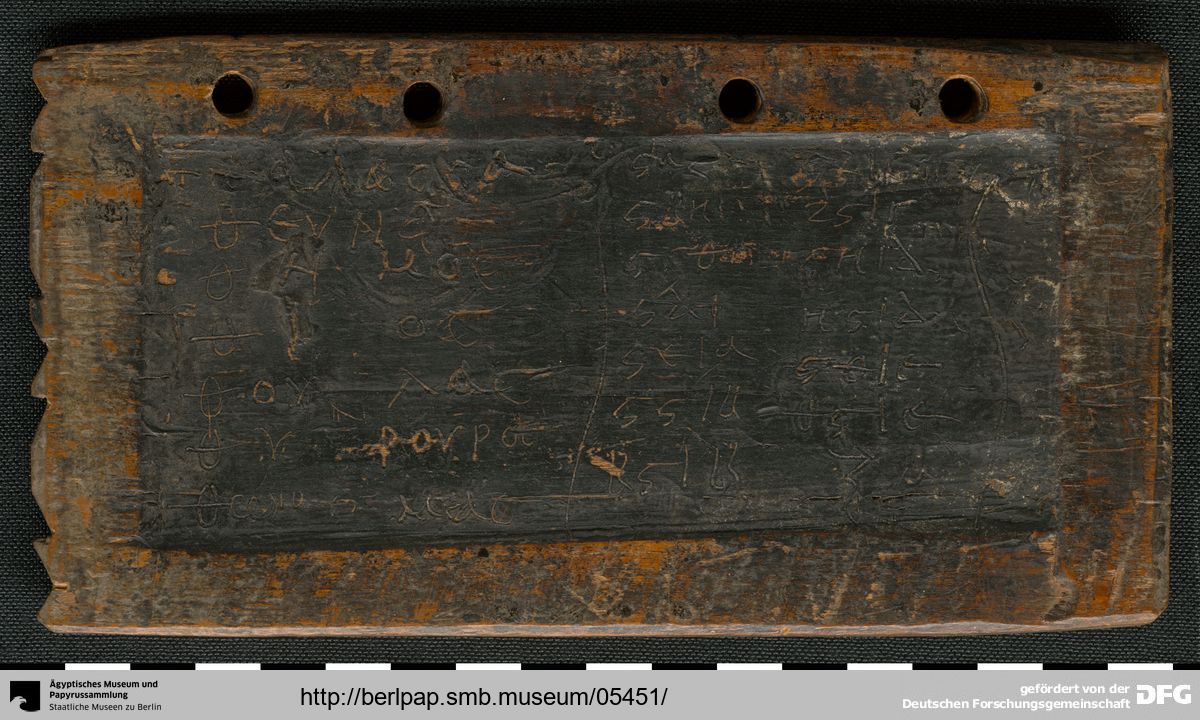SB III 6216–6218 (P. 14000)
„Only with writing and reading life really gets started“ – this is how a Greek writing exercise starts, written by the last owner of this schoolbook. It is probably a sentence his teacher dictated to him or wrote on a blackboard for him to copy. From the Ptolemaic Period on Greek was the official language used in Egypt, which made the study of the Greek script a necessary step to take for a successful career as an Egyptian official. During the following centuries the language kept its prominent status. This schoolbook is to be dated to the time of the 4th and 5th centuries AD.
The book is made out of nine wooden tablets, which are tied together, just like a modern scribbling pad, to form a kind of book called Codex. The binding itself is lost, just as another page of the book, which was most likely made of ten pages, has gone missing. A carved line running diagonally from top to bottom across the borders of each page leads to this assumption. At one point the line jumps from one page to the other suggesting that there had once been another page filling the gap.
In order to make each page of the book usable not only once, but several times, the writing was not done directly on the wooden tablets, but on a carved, rectangular depression filled with wax. The student could write his exercises into the wax using a metal tool called “stilus”. It was also possible to erase the writing by smoothening the surface again with the flattened back of the stilus.
Luckily the last user of this book did not cancel all of his exercises, leaving some of his notes, which give a fascinating insight into the topics taught at ancient schools. There are different writing exercises and some others to practice the correct separation of syllables. The student was also improving his mathematical skills by calculating: 8+1=9, 8+2=10, 8+3=11, but also 8+8=16 and 2×8=16. On a different page he drew some Christian religious symbols. It is interesting to notice that two different hands can be distinguished in this book: the untrained one of the student and a skilled one most likely belonging to the teacher. The latter left a sententia by Menander, maybe for his pupil to copy.
This kind of writing tablet was commonly used for teaching and some of them have survived till today. However it is unusual for a book to be made of so many tablets, which makes this example a special case. In addition, it is preserved in an extraordinary good condition. It’s place of provenience might be the ancient city of Tebtunis, close to the modern Umm el-Baragat. The place situated in the Fayum is known for the great numbers of Greek and Demotic papyri found there, telling us a lot about everyday life in Ancient Egypt. This schoolbook was acquired at Giza in 1912 by Wilhelm Ludwig Schubart von Ali who brought it to the papyrus collection in Berlin.



